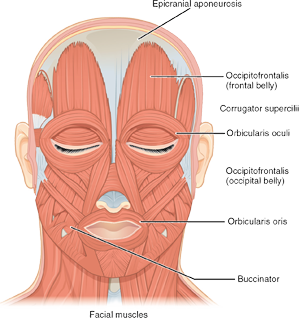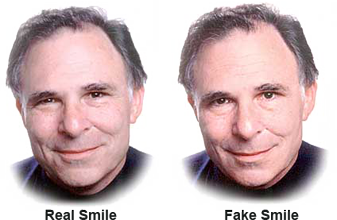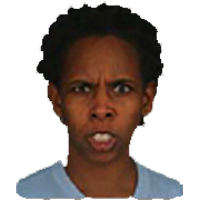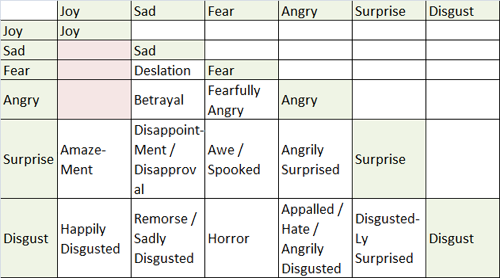
4myLearn – Emotion Recognition
In interpersonal interactions, people are expected to integrate and interpret dynamic nonverbal information such as facial expressions, voice inflections, and body language, and respond in a timely, reciprocal, and appropriate manner. Non-verbal communication conveys 75% - 90% of the message. This is particularly challenging given the complexity of subtle but meaningful adjustments that last between 0.5 to 5 seconds and vary in intensity. Increase your skill with emotion recognition games.
The human face is capable of producing universally understood and social expressions associated with a wide range of emotions; the radiant smile of joy, the glare of anger, the wide-eyed look of surprise, the frozen stare of terror, the curled upper lip of disgust, and of downturned mouth of sadness. Emotions organize our physiology, perception, focus, thinking, and action to meet dynamic environmental and internal demands.

The face has 43 skeletal muscles that are unique in that they connect bone to skin and other soft tissue, instead of bone to bone. Also the muscles are both involuntary (motions done unconsciously, controlled by the cingulate cortex) and voluntary (motions done consciously and on purpose controlled by the motor cortex). The muscles are arranged primarily around the facial openings. They attach mainly around the eye sockets and the mouth, and to a lesser extent the nose and ears. These unique muscles only exist to create facial expressions. The expressions prepare the person physiologically and quickly motivate behavior in others.

Emotions and their expressions are controlled by different neurotransmitters. Different combinations lead to complex emotions.
Emotion blindness, or Alexithymia, occurs in 10% of the total population, and 85% of adults labeled with autism spectrum disorders (ASD). Although it appears that the 6 basic emotions, observed by Paul Ekman, are recognized by almost all. But the culturally determined expressions and social response can be difficult for some people to learn. Only 25% of people can detect deceitful expressions without special training. Paul Ekman developed a facial action unit (AU) encoding system useful for understanding basic and cultural determined expressions.
Joy
Joy helps people build ego-resilience and other coping resources such as identifying creative opportunities, adapting to constraints, and bouncing back from misfortune. Positive emotions are a predictor for desirable life outcomes.

A smile of joy communicates that the person is experiencing emotional well-being they would like to continue, and the observer may like to join.
There are no differences in overall frequencies of laughter in young children labeled with autism as compared to age matched peers. What caused the joy differed. They were less likely to smile or laugh at funny faces or socially inappropriate acts. Joy was a more personal emotion rather than a shared emotion. There was more unshared laughter in interactive situations and less attention or smiles in response to others' laughter. They rarely attempted to it generate it in others through acts of clowning or teasing. The natural tendency is to not join in unless encouraged. A baby that does not seek to engage gets less opportunity to learn socially, unless there are people who are mindfully aware, and overcome their natural tendencies.

A spontaneous smile of joy has upward and widening movement of the mouth into a broad grin (AU12), and movement of the muscle around the eyes (AU6). The eye muscles cause smile-shaped wrinkling around the eyes, crow's feet, and an upward lifting of the cheeks which causes folds in the lower eyelids, in some people, dimples, and a deep laugh line, a fold of skin from nose to chin (AU11). If the mouth is closed, the lips are thin and pressed tight against the underlying bone. If the mouth is open, the upper lip is straight, showing the upper teeth; the lower lip is straight in the middle and angled near the corners. The eyebrows are relaxed.
A fake or social smile, controlled by the motor cortex, has only the upward movement of the mouth, it is slower and less symmetric. The Crow’s feet and folds in the lower eyelids are missing. So the eyes hold the key to sincerity.
Sadness
Sadness is the opposite of joy and has a negative impact on ego-resilience. It is emotional pain due to loss, despair, helplessness and sorrow. It is often prolonged in duration. Sadness indicates a desire to withdraw from the situation. Socially it communicates appeasement and plea for sympathy.

In sadness, the inner portion of the brows are drawn together and raised (AU1 + AU2 + AU4). The eyes usually are cast downward and the lower eyelids slightly raised. The corners of the mouth are pulled downward (AU15).
Sadness has many intensities and variations, including open-mouthed crying, closed-mouth crying, suppressed sadness, nearly crying, and looking miserable.
Anger
Anger occurs when one feels threatened. It alerts of impending threat to others and communicates dominance or willingness to do harm to the source of threat.

The brows are pulled downward and together (AU2 + AU4), while the eyes stare in a penetrating fashion, with the eyes are wide open (AU5), but pressure from the lowered brow prevents the white of the eye from showing above the iris. The nostrils can be drawn upward (AU10). The lips are closed hard against the teeth (AU24), or the lips parted to bare teeth (AU25).
Variations of anger include shouting rage, rage, and sternness.
Fear
Fear varies in intensity from apprehension to terror. It indicates avoidance and a desire for flight. Expressions of fear alert others to possible threat, and appease potential aggressors.

In the upper face, the brows appear raised and straightened (AU1 + AU2 + AU4). The inner portions of the eyebrows are bent upward. The eyes are alert and tense during fear, with the upper lid raised and the lower lid tense. Physiologically, the widened eyes increase visual field and speed up eye movements. The corners of the lips may be drawn backward (AU20), tightening the lips against the teeth. In the lower face, the teeth usually are exposed by the downward pull of the lip (AU15 and/or AU16). The mouth may be slightly dropped open and stretched sideways.
In worry, the lips are squeezed tightly together, and the lip margins disappear. There is a bulging below the lower lip and over the chin. In terror, the eyes and mouth are wide open. The upper lip is relaxed, while the lower lip is stretched wide and tight, exposing the lower teeth. The laugh line becomes straight and shallow. Bracket-shaped folds appear to the sides of the lower lip.
Disgust
Disgust is an expression of aversion, such as the taste of something you want to spit out. It indicates a desire to expel the undesired. Disgust warns others about aversive foods or even distasteful ideas and behaviors.

The eyes, nose, and mouth constrict. Physiological, the constricted orifices reduce the chance for intake or inhalation of possible contaminant. There can be a lowering of the brows (AU4). Usually the upper lip is raised (AU9 and/or AU10), drawing up the nose. The lower lip may be drawn downward or raised (AU17).
Disgust ranges from disdain to physical repulsion. In disgust, the eyebrows are relaxed. The eyelids are relaxed or slightly closed. The upper lip is raised into a sneer, often asymmetrical. The lower lip is relaxed. The laugh line is deepest alongside the nose. In disdain, the eyelids may be partly closed, with the eyes looking down. For physical repulsion, the eyebrows are lowered, especially at the inner corners. The eyes may be mostly shut in a squint. The upper lip is raised in an. intense sneer, which may show the upper teeth. The lower lip is slightly pushed up. There are vertical lines between the brows, crow's feet and lower eyelid creases, wrinkles from the inner corner of the eye across the bridge of the nose, and a chin bulge.
Surprise
Surprise is a brief startle response due to an unexpected event. Surprise can have any valence, and varying levels of intensity. It indicated orienting toward the stimulus, and communicates that the unexpected has happened.

In surprise, the eyebrows are raised straight up, as high as possible (AU1 + AU2). The upper eyelids are open as wide as possible (AU5), with the lower eyelids relaxed. Physiological, the widened eyes increase visual field to see unexpected stimulus. The jaw is dropped (AU26) opening the mouth without muscle tension to form an oval shape (AU25). The more extreme the surprise, the wider the mouth opens. In surprise, horizontal folds are formed across the brow.
Compound Expressions
Basic emotions are often the building blocks of other more complex emotions whose expressions are culturally determined.

Different combinations of angry and disgust form many different expressions including: appalled, hate, outrage. The compound expression of Hate is given below.

Most Telling Features
Frequently people make judgements from only a few key facial expression features. These features and common western interpretations are found in the table below.

